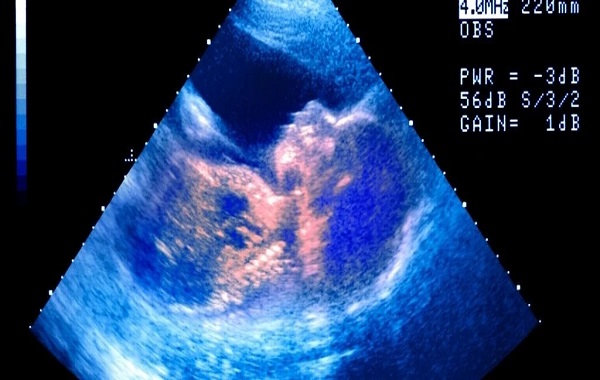Do Babies Cry in The Womb? Ultrasounds Show Something Strange Going On
Beginning in the second trimester of pregnancy, an expecting parent may feel their unborn baby kicking, rolling over, and even hiccupping. But is it known whether babies can start crying before they’re born?
Ultrasound technologies have allowed us to peer inside the uterus and observe fetuses while they’re still developing. For example, a video published in the journal Archives of Disease in Childhood – Fetal and Neonatal Edition in 2005 shows a 33-week fetus making facial expressions that look like crying through an ultrasound profile.
After the researchers gave the fetus a vibration and noise stimulation, it opens its jaw wide, tucks in its chin and lets out three big exhales in a row as its chest rises and its head tilts back, ending with a chin quiver. This movement was seen in 10 fetuses (about 6 percent of the total number of babies scanned).
So, was this fetus crying in the womb? It depends on how you define crying.
“If you use the definition of ‘a loud inarticulate shout or scream expressing a powerful feeling or emotion,’ then you can say quite definitely that babies don’t cry in the womb,” Nadja Reissland, a developmental psychologist at Durham University in the UK, told Live Science in an email.
Reissland’s team has analyzed the development of facial expressions in utero by watching the movements of fetuses in the second and third trimesters through 4D ultrasound imaging – 3D movies of fetal actions.
These facial expressions – including the “cry-face-gestalt” and the “laughter-gestalt” that Reissland and colleagues defined in a paper published in the journal PLOS One in 2011 – may be precursors to the facial expressions used outside the womb.
These preliminary facial expressions develop around 24 to 35 weeks, and their complexity increases with gestational age. These motions are too subtle to be felt by the pregnant parent, Reissland said.
But the fetus seems to be practicing at least the facial movements of crying before birth, preparing it to become functional when they take their first breath and let out that long-awaited wail signaling their arrival.
We also don’t know that these crying motions are in any way linked to pain or discomfort in the fetus. In Reissland’s studies, the fetuses showed these facial expressions without stimulation of any kind; the expressions they observed weren’t in response to any stimulation by the researchers.
Facial expressions play an important role in postnatal bonding and communication between the parent and child, Reissland said. These facial gestalts may act as a kind of trial run for the facial muscles – this practice in the womb may help the baby bond with others once they’re born.
Reissland’s goal in studying these facial expressions is to help researchers develop a useful tool for identifying developmental disorders and other health problems in utero. A fetus with a developmental or health issue might not show these facial expressions at the same time as a healthy fetus would.
Fetuses don’t produce tears, either; crying with tears doesn’t typically begin until around four weeks after birth, once babies’ tear ducts are mature enough to form teardrops, Live Science previously reported.
Source: Science Alert
New tool activates deep brain neurons by combining ultrasound, genetics
Do Babies Cry in The Womb? Ultrasounds Show Something Strange Going On

